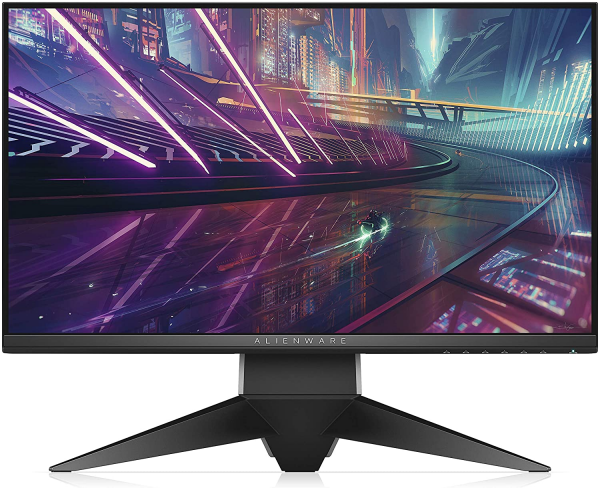Alienware
Alienware AW2518HF: a competition 25 "240 Hz TN gaming monitor!
Aprox. 329€
See specificationsThe manufacturer Alienware has added two 240 Hz gaming monitors to its catalog: the Alienware AW2518H (G-Sync) and the AW2818HF (FreeSync) - FreeSync version compatible with AMD Radeon graphics cards - which we are testing today. Verdict!
Positive points
The best afterglow time to date.
FreeSync compatibility.
240 Hz frequency.
Image quality.
Ergonomics.
Finish.
Connectivity.
Bad points
Reduced viewing angles.
No backlight scanning (ULMB).
Our review
Presentation
Like the ViewSonic XG2530 or AOC Agon AG251FZ, the Alienware AW2518HF monitor has a 25-inch (63.5 cm) Full HD TN panel (1,920 x 1,080 px) supporting a refresh rate of 240 Hz It is comparable to the Agon model by its flawless ergonomics and its FreeSync compatibility, which avoids the problems inherent in vertical synchronization such as image tearing (tearing) and micro-slowdowns (stuttering). The manufacturer announces a response time of 1 ms, a contrast of 1000: 1, a brightness of 400 cd / m² and angles reduced to 170 ° / 160 °, TN technology requires. Unlike the Alienware AW3418DW, this model does not have LEDs to brighten up your interior decoration.
Launched at € 450, the Alienware AW2518HF monitor is currently sold for around € 300 at Dell. It is therefore very well placed compared to the AOC Agon AG251FZ, sold for around 380 €, and the ViewSonic XG2530 displayed at 400 €.
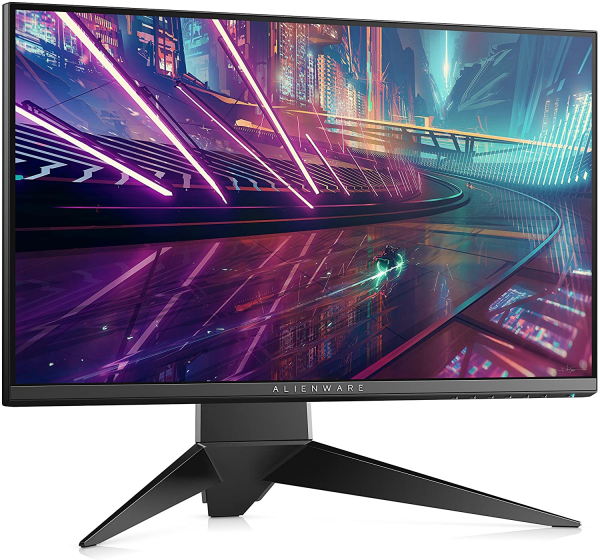
Ergonomics
The Alienware AW2518HF uses the design of the very large AW3418DW. It is well designed, the finishes are impeccable and its design is relatively sober, especially for an Alienware model. Only the Alienware logo gives a clue to the target audience, namely the players. The 25-inch matte panel minimizes reflections.
Like the front, the back of the monitor is fairly standard and only the Alienware logo at the top right sets the tone. A cable management system to remove all of the connectors from the base of the stand, to free up the office.
The monitor is adjustable in height over 13 cm, in inclination between -5 ° to + 25 °, and manages rotation using a ball joint over ± 20 °. It also has a pivot allowing passage to portrait mode, but this is not really advisable on a TN model, the vertical viewing angles being very limited.
The video connection consists of a DisplayPort input and two HDMI 1.4 inputs. Only the DisplayPort achieves a frequency of 240 Hz in the native definition of 1,920 x 1,080 px. If the HDMI 1.4 allows a display in native definition, the frequency is limited to 120 Hz with this connection. For the rest, the Alienware AW2518HF has a headphone output, a mini-jack output and a hub with four USB 3.0 ports, two of which are conveniently placed at the base of the panel.
On our fairly standard 140 x 60 cm desk, the 25 inch Alienware is very compact, but the depth of the stand seems exaggerated compared to the size of the screen. Indeed, the stand occupies 27 cm, almost half the desk while a 32-inch monitor like the AOC Q3279VWF is content with 15.3 cm.
In terms of settings, the OSD accessible via six buttons on the base of the monitor is not very practical. It often happens that you get the wrong button, but the power button is fortunately located quite far from the others. Alienware would do well to take inspiration from the Asus joystick, which we believe is the most effective solution currently.
The Alienware AW2518HF consumes 14 W on our test pattern with a white calibrated at 150 cd / m² (brightness lowered to 50). The relative consumption is 84 W / m², a figure slightly lower than the average of the monitors tested (100 W / m²). At the minimum of the brightness (18 cd / m²), it consumes 11 W and rises to 22.7 W at the maximum (401 cd / m²).
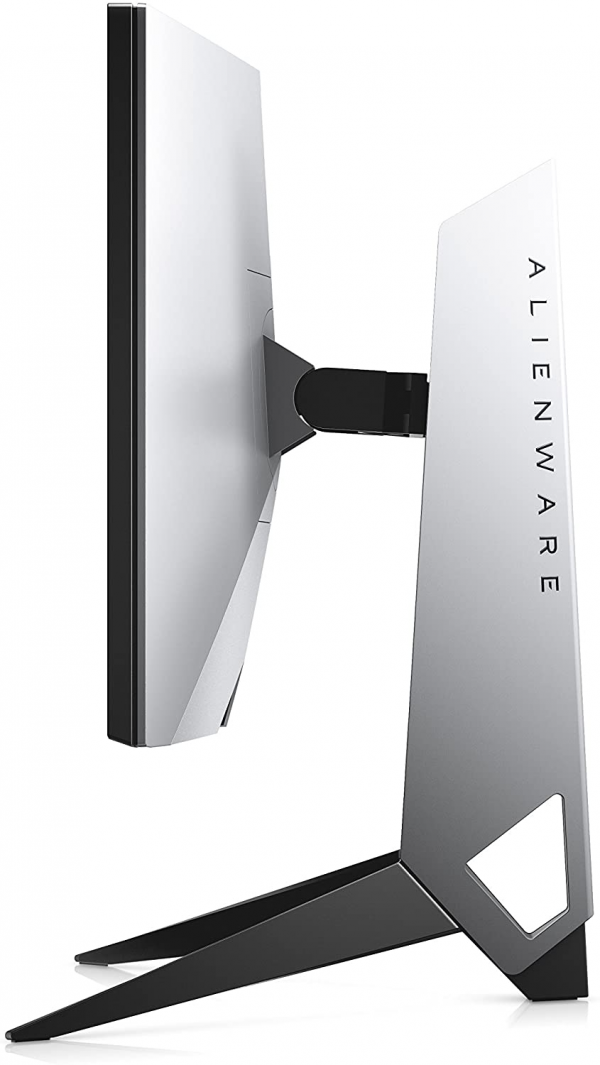
Colors and contrast
Out of the box, the rendering is already very good. The temperature is perfect, with a curve free from any defect over the entire spectrum and an average value in accordance with the expected standard of 6,500 K. The gamma curve lacks stability at the end, resulting in light gray tones blocked, but the average of 2.3 remains fairly close to the reference 2.2. Finally, the colors are fairly faithful since the average delta E is less than 3, a threshold below which the eye no longer differentiates between the colors requested and the colors displayed. Note however that red, green, blue and yellow display a delta E greater than 3.
In order to obtain a white close to 150 cd / m², we lowered the brightness to 37. We did not find a setting allowing the gamma defect to be corrected. The curves therefore remain the same. Only the temperature drops very slightly. The rendering is still quite good, especially for a monitor intended primarily for players.
Calibrating the monitor to the probe perfectly smoothes the gamma curve on the target value (2.2). The temperature curve remains perfect while the colors are noticeably more faithful, but not by much, proof that the monitor is already sufficiently calibrated at the factory. You can download the color profile via this link.
The contrast ratio, limited to 970: 1, is quite good for a TN panel, but rather average in absolute terms. Blacks lack depth. This has no impact when used in daylight, but in the dark, blacks appear gray. This contrast remains very far from that measured on the best VA panels: the AOC Q3279VWF, Textorm TX32 and Philips BDM4037UW monitors, for example, exceed a rate of 4000: 1. The screen displays very good homogeneity of the white (average deviation of only 5% over the entire 25-inch panel).
Finally, it is now a habit with TN panels, the viewing angles are very reduced. Even when facing the screen, you can observe a gradient from top to bottom over an area that should be uniform.
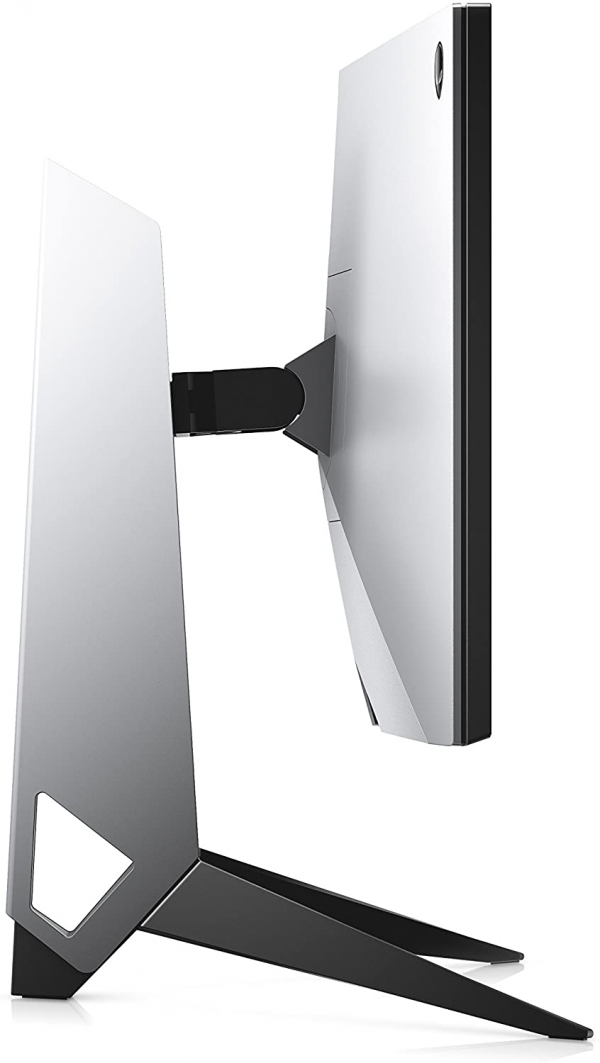
Reactivity
This screen does not use pulse width modulation (PWM) to manage the LEDs of the backlight system, which therefore reduces the brightness without risking a flickering effect which can cause eye strain and headaches for people who are sensitive to them. It also has a blue light reduction mode via software adjustment.
The Alienware AW2518HF manages the FreeSync between 48 and 240 Hz and therefore works optimally when the graphics card sends between 48 and 240 images per second. In this case, the fluidity is there and the image does not suffer from tearing problems or jerks (micro-stuttering). In the absence of ULM (Ultra Low Motion Blur) mode, it is not possible to improve the sharpness of moving objects by scanning the backlight.
The TN panel is quite simply the most reactive passed by our laboratory. With its average remanence time of 3 ms, the Alienware AW2518HF dethrones the Acer Predator XB252Q and BenQ Zowie XL2540 flashed at 3.5 ms. By default, the overdrive is set to the medium setting, but the Fast setting provides better response time with very low ghosting. However, the quickest setting results in a rather annoying reverse ghosting phenomenon.
Finally, the delay in the display (input lag) is measured at 14.3 ms. It is a little less good than the best monitors, which go down to 10 ms, but it does not affect the feeling. The delay between the generation of the image and its display on the screen remains undetectable.

Conclusion
The Alienware AW2518HF is a great monitor for gamers looking for performance first. The 240 Hz panel is currently the most reactive on the market and even offers the luxury of being well calibrated. The ergonomics are flawless and the connection is well thought out, in particular the headphone jack and the USB ports at the base of the screen, but you must accept the faults of TN technology.
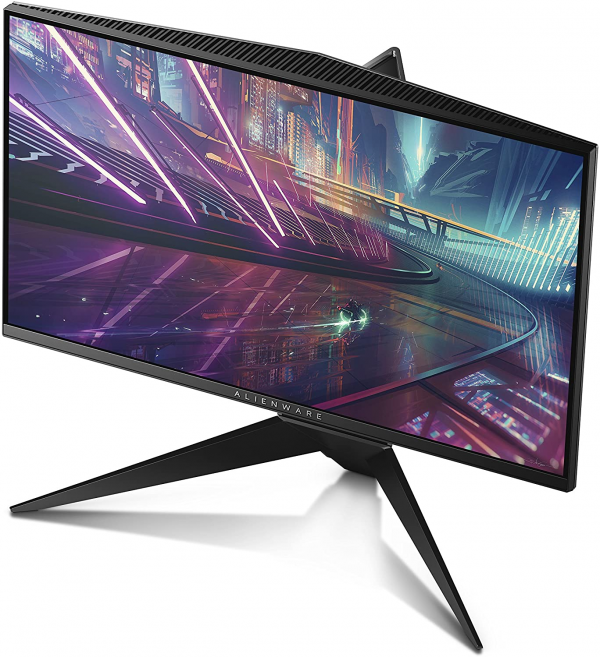
Specifications

